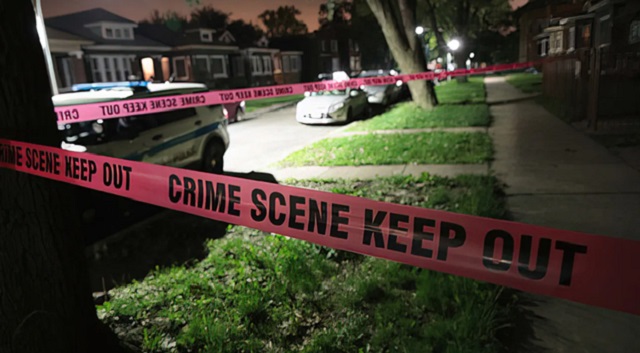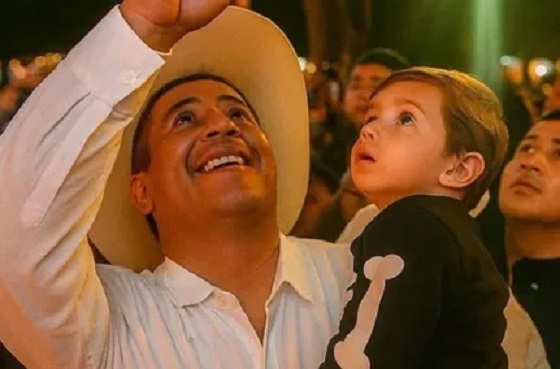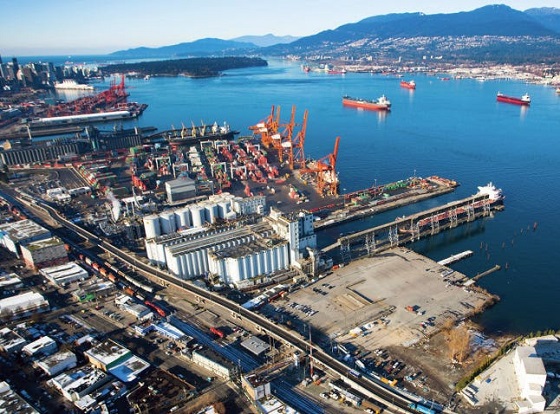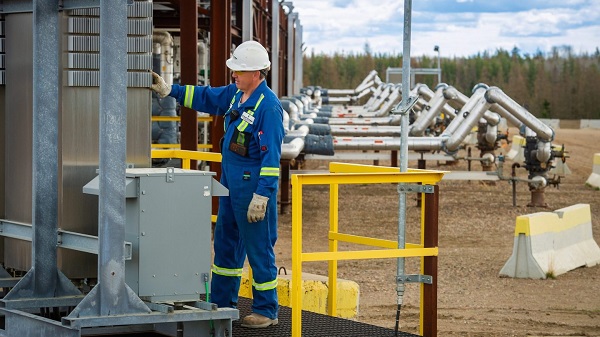Crime
While Illegal Aliens Kill and Rape, Bogus Crime ‘Studies’ Ideology Still Blunt Solutions

From ToddBensman.com
By Todd Bensman
Time for border enforcement hawks to disengage with this intellectually fraudulent sham debate and find this new approach
Advocates of a borderless United States – those who will do or say anything to unleash and maintain a torrent of unimpeded illegal mass border migration – demand that Americans deny an especially resonate outcome: illegal border crossers who murder, kill with drunk driving, rape, rob and beat their hosts.
In their arguments for unmitigated releases into the country of illegal border-crossing strangers, libertarian and progressive liberal pro-illegal immigration, anti-border enforcement activists always point to “studies” that compare illegal alien criminality to U.S. citizen criminality and then conclude that Americans commit as much or more than the illegal immigrants.
Media writers and pundits on the open-borders side parrot the “studies” to deflect detention and deportation proposals that would reduce illegal alien crime on grounds that the main danger to address are U.S. citizen criminals and, while you’re at that, let the border flows continue unimpeded since that population is less worrisome.
“No, Illegal Migrants Aren’t Fueling a Crime Wave,” reads the June 26 headline of a Bloomberg column by Justin Fox in a typical argument against illegal immigration enforcement.
“Migrant Crime Wave Not Supported by Data, Despite High-Profile Cases,” the headline of a February 15 New York Times report states in another one undermining recent demands for border enforcement.
“Ironically, studies indicate that immigrants commit less crime than U.S.-born individuals, and advocates have been pushing for less detention for years,” wrote Michael Lukens, Executive Director at the Capital Area Immigrants’ Rights Coalition, in a February 20 letter to the editor in The Washington Post. “Instead of alarmist tactics, ICE [U.S. Immigration and Customs Enforcement] should be looking at the devastating impacts of detention and releasing immigrants because it is the right thing to do.”
As complicit in this redirection are Republican border hawks and many on the right who abhor unimpeded illegal border immigration because they frequently engage the citizens-versus-illegal-aliens comparison, ever trying to challenge, counter, and undermine the crime comparison studies.
But what opponents of unmitigated mass migration must finally be made to realize, especially now that illegal alien crime is figuring largely for the November 5 presidential election, is that the door their adversaries opened for them leads up a fake stairwell.
The citizen-illegal alien comparison is invalid at the jump and, because it is once again often cited, a different approach is necessary.
An invalid apples-to-rocks comparison
The notion that policy thinkers and media pundits must compare the measured crime rates of citizens and illegal aliens – it’s unclear who initially devised it – has no foundation in academic science because the two compared groups are not similar enough.
Here is why: Illegal immigrants – and not ever American citizens and legal residents – are uniquely subject to an elaborate, expansive, and lawful government deportation and detention apparatus that Congress built to block and remove them from the country, in some part, so that they are not present to commit crimes. The same apparatus, of course, cannot touch American citizens who will commit crimes.
To restate the seemingly obvious, illegal aliens blocked at the border or who are quickly removed from the country cannot inflict any harm on American inhabitants because they are not present. That means every single crime committed by an illegally present immigrant should never have happened, was avoidable, preventable, and unnecessary whereas the Department of Homeland Security detention and removal machine cannot prevent a single American citizen crime. The United States, unfortunately, has no such choice but to contend with its criminal citizens before, during and after every crime they commit.
What this means is that all crimes committed by illegal aliens amount to a 100-percent net-gain burden on American society and its criminal justice system that was always largely preventable and unnecessary.
These differences between the two groups amount to an insurmountable Grand Canyon for purposes of comparison, apples-to-rocks, thus invalid for any academic study at the jump.
The libertarian and progressive liberals who created and purveyed the citizen-versus-illegal immigrant crime rate comparison debate should be called out for their campaign of misdirection or, if you will “gas-lighting.”
The misdirection campaign has always neutralized deserved political backlash against the highly resonate problem of 100 percent unnecessary extra crime that illegal aliens commit in the United States and stunted political momentum for policy remedies that would reduce both. By design, the mass illegal immigration and its associated 100 percent extra crime victimization continue while those who either favor or disfavor illegal immigration fruitlessly wage battles over a totally invalid proposition.
A different approach is long overdue.
The comparison stands discredited anyway but…
Border enforcement hawks have done much to discredit the studies that conclude American citizens commit more crime than illegal aliens. For instance, the Center for Immigration Studies has found that the activist-academics who favor unimpeded illegal immigration have misused data to undercount criminal alien crime. (See Misuse of Texas Data Understates Illegal Immigrant Crime and Continued Misuse of Texas Crime Data)
But as this 2024 presidential campaign period shows, efforts to engage the comparison debate have done little to suppress its continued impact of nullifying momentum for policy change. Mass media outlets still default to the original ruse at a time when a new approach to this discussion is most needed at this key time in the American political cycle, presenting an opportunity for the polity to rise up on good information and demand a halt to the mass border incursions that fuel 100-percent unnecessary net increases illegal alien crime.
Even though they have done a laudable job at discrediting the original studies, border enforcement advocates should disengage from further such distracting attempts and call out the comparison studies as the mendacious intellectual sham they are, on grounds that the two groups are too different to be compared. They must parry every citation of the studies and re-direct to the correct policy discussion, which is the extent to which current American leadership uses existing border enforcement law to block, detain, and deport. They must argue that all illegal alien crime is a 100 percent net addition to America’s crime problem, no matter what the rates per alien are, and that American citizen crime rates are irrelevant to the discussion of a solution to that.
They must only ever argue that blocking, detaining and deporting illegal aliens are the main levers that enable or prevent illegal alien crime in the United States. Most Americans will instinctively understand that this objective truth is on their side.
No one on either side of this policy issue should ever again engage in this immoral sham, but border enforcement hawks should parry and thrust elsewhere.
Graves that need never have been dug
Having said all of this, the comparison “studies” ruse was useful in one important regard; it surfaced rare data that establishes a rare and important measure of this preventable illegal immigrant crime. The data used in them comes from the only U.S. state that has tracked its unnecessary, all-net-gain illegal immigrant crime for years: Texas.
Border enforcement advocates should use this rare data set, not to compare the incomparable but, rather, to emphasize that it was entirely a net total – preventable – addition to overall U.S. crime. The Texas data should be used to emphasize a need for the United States to protect its citizens by exercising existing deportation and detention requirements embodied in the Immigration and Naturalization Act.
America may never know the extent to which alien crime that will result from the three-plus years of the Biden border crisis, which has ushered into the country at least seven million strangers as of this writing. Most local, state and federal agencies will not log immigration status of criminals.
But the Texas Department of Public Safety tracks the immigration status of suspects who are booked into local jails through a program that submits fingerprints to the FBI for criminal history and warrant checks, and to DHS. The agencies return immigration status information on those whose fingerprints were already on file (which is not all of them).
From the resulting Texas statistics, we catch a sound partial glimpse at the vaster sea of nationwide blood and carnage that was up to 100 percent preventable and unnecessary, of murder, rape, child abuse, burglary, felony theft, drug trafficking, alien smuggling and drunken driving manslaughter.
Between June 1, 2011 and June 30, 2024, these 437,000 criminal aliens (308,000 classified as illegal) were charged with more than 533,000 unnecessary extra criminal offenses that should never have happened.
Those included 997 homicide charges (resulting in 498 convictions as of June 2024), 1,245 kidnapping charges (resulting in 354 convictions), 6,744 sexual assault charges (resulting in 3,537 convictions), 7,763 sexual offense charges (resulting in 3,537 sexual offense convictions), and 6,560 weapons charges (resulting in 2,138 weapons convictions). Texas includes another category called “All Other Offenses,” which tallies 298,912 (and 103,265 convictions).
The Texas data reveals hundreds of dead people who should be alive, thousands of sexual assault and sexual offense victims who should never have suffered the trauma, and tens of thousands of assault charges involving victims who would not have been hurt.
The Texas data shows that criminal aliens took up police time and clogged up the American justice system that could have been more dedicated to American criminals. Thousands of drugs, burglary, robbery and weapons charges need not have jammed the Texas criminal justice systems at taxpayer cost.
In all, more than 32,000 people identified by DHS as living in the country illegally were imprisoned in Texas.
But the number of criminal illegal aliens appears to be a highly undercounted one even when a state like Texas is working hard at the tally. We know this because the Texas program found that another 10,748 illegal aliens since 2011, whose immigration status hadn’t been federally determined at the time of their arrests, were only later determined to be illegally present when they were sent to Texas state prisons. There must be far more.
Among them were prisoners serving time for 134 more unnecessary, preventable homicides.
The graves of all their dozens of dead victims are real even as nary any of them have drawn national media attention like a mere few have lately.
The bamboozlers bear responsibility for tragedies that deportation would have prevented. Far too often, the preventable violence is exceptionally brutal, scenes from the most extreme horror movies in volumes far too numerous to catalogue here.
The huge scale of seven or ten million foreign national strangers allowed to enter the United States in three years means the size of the criminal class among them must be historically large as well. All their crime will be 100 percent extra on top of U.S. citizen crime and potentially reducible by up to 100 percent in with the exercise of lawful detention and deportation.
Far fewer bad things will happen if Americans finally slam closed the wrong door with its fake stairwell.
Crime
Public Execution of Anti-Cartel Mayor in Michoacán Prompts U.S. Offer to Intervene Against Cartels

“I don’t want to be just another mayor on the list of those executed”
On the first night of November, during Day of the Dead celebrations, the independent, anti-cartel mayor of Uruapan in Michoacán, Carlos Manzo, was assassinated in the heart of his city during a public festival. His bloody murder has underscored the deadly risks faced by local officials who may lack adequate protection from a state that critics say is corroded by corruption and penetrated by powerful cartel networks that, in some regions, have supplanted government authority. The killing intensifies urgent questions about political and police corruption, cartel impunity, and the scope of U.S.–Mexico security cooperation — with a response from the U.S. State Department today offering to “deepen security cooperation with Mexico.”
Manzo, a fiercely outspoken anti-cartel mayor who took office in 2024 as Uruapan’s first independent leader, was gunned down as he stood before crowds at the annual Day of the Dead candlelight celebration. Witnesses said gunfire erupted shortly after Manzo appeared onstage, holding his young son moments before the attack. The festival, known locally as the Festival de las Velas, drew hundreds of families to Uruapan’s central plaza — now transformed into the scene of Mexico’s latest high-profile political assassination, and a catalyst for nationwide outrage, as online protests surged and citizens called for demonstrations against cartel violence.
According to early reports, at least two suspects have been detained and one attacker was killed on site. Authorities asserted — despite the success of the attack — that Manzo had been under National Guard protection since December 2024, with additional reinforcements added in May 2025 following credible threats to his life.
In Washington today, the killing drew political reaction. “My thoughts are with the family and friends of Carlos Manzo, mayor of Uruapan, Michoacán, Mexico, who was assassinated at a public Day of the Dead celebration last night. The United States stands ready to deepen security cooperation with Mexico to wipe out organized crime on both sides of the border,” Deputy Secretary of State Christopher Landau, the former U.S. ambassador to Mexico, said in a statement shared online.
Federal Security Minister Omar García Harfuch said the gunmen “took advantage of the vulnerability of a public event” to carry out the attack, despite a standing security perimeter.
President Claudia Sheinbaum condemned the killing as a “vile” assault on democracy and vowed there would be “zero impunity.” Her administration convened an emergency security meeting and pledged that the investigation would reach the “intellectual authors” of the crime. Yet the murder has already ignited outrage across Mexico over the government’s failure to protect local officials in cartel-dominated states such as Michoacán, where extortion, assassinations, and territorial disputes continue to erode basic governance.
Manzo had publicly warned of his fate. “I don’t want to be just another mayor on the list of those executed,” he said earlier this year, as he pressed the federal government for better coordination between municipal and military authorities. For years, Uruapan — an agricultural and trade hub in western Mexico — has been the site of deadly clashes between the Jalisco New Generation Cartel and remnants of the Knights Templar Organization, both vying to control lucrative extortion and drug routes.
The killing of Manzo fits a dark and familiar pattern. In 2025 alone, several mayors in Michoacán, Guerrero, and Tamaulipas have been killed in attacks widely attributed to organized-crime groups. In June, the mayors of Tepalcatepec and Tacámbaro were ambushed and slain while traveling in official convoys. More than 90 local officials have been murdered since 2018 — a rate that analysts say reflects how cartels target municipal governments to ensure political control over territories tied to narcotics, mining, and agriculture. Uruapan, at the heart of Mexico’s avocado belt, is a strategic prize for the cartels that tax every shipment leaving the region.
The mayor’s death also recalls earlier tragedies that scarred the nation. In 2012, Dr. María Santos Gorrostieta Salazar, the former mayor of Tiquicheo, was abducted and murdered after surviving two assassination attempts and defying cartel threats. Her death became emblematic of the dangers faced by reformers who refuse to cooperate with criminal groups. More than a decade later, Manzo’s murder illustrates that little has changed — except the brazenness of the attackers, now willing to strike in front of cameras and families celebrating one of Mexico’s most sacred holidays.
The killing has also reignited long-standing U.S. frustration over Mexico’s inability to stem cartel violence, even as the Trump administration has expanded counter-narcotics operations at the border. Under Trump’s renewed directives, the U.S. has classified several Mexican cartels as foreign terrorist organizations and empowered the Pentagon to develop strike options against high-value targets abroad. A September 2025 joint statement between Washington and Mexico City pledged deeper intelligence sharing and cross-border enforcement initiatives, including efforts to halt arms trafficking southward.
However, Mexico’s government remains deeply wary of any U.S. military involvement on its soil. President Sheinbaum has warned that “Mexico will not stand for an invasion in the name of counter-cartel operations,” rebuffing Republican calls for unilateral action. Her position lays bare a long-standing tension between Mexico’s need for U.S. support and its insistence on sovereignty — a fault line that Manzo’s killing has reignited.
The Bureau is a reader-supported publication.
To receive new posts and support my work, consider becoming a free or paid subscriber.
Crime
Canada Seizes 4,300 Litres of Chinese Drug Precursors Amid Trump’s Tariff Pressure Over Fentanyl Flows

In what appears to be the second-largest Chinese precursor-chemical seizure in British Columbia in the past decade, Canadian border and police officials announced they intercepted more than 4,300 litres of chemicals used to manufacture fentanyl and other synthetic drugs at a notoriously troubled port in Delta, B.C.
The announcement of a seizure that occurred in May 2025 comes amid President Donald Trump’s continuing pressure on Ottawa to crack down on fentanyl trafficking in the province — which U.S. officials say has become a key production and shipment point for Chinese and Mexican traffickers.
The seizure — announced jointly by the Canada Border Services Agency (CBSA) and the RCMP — underscores the scale and persistence of global trafficking networks funnelling illicit materials into Canada’s drug markets.
According to the agencies, border officers examined two marine containers that arrived from China in mid-May, both bound for Calgary, Alberta. Acting on intelligence developed by CBSA’s Pacific Region, officers discovered 3,600 litres of 1,4 Butanediol, a key ingredient for producing GHB, often known as the “date-rape drug”; 500 litres of Propionyl Chloride, a chemical precursor used to synthesize fentanyl; and 200 litres of Gamma Butyrolactone (GBL), another controlled intoxicant.
The chemicals were concealed inside 60 clear jugs and 20 blue drums within the containers. Investigators believe the shipment was intended for use in clandestine drug laboratories. The RCMP confirmed that an investigation into the importation network remains ongoing.
The seizure comes amid growing concern about Canada’s port security, particularly in Metro Vancouver, where experts and local officials say criminal networks are exploiting gaps in federal enforcement.
The Delta seizure follows a series of major CBSA operations targeting precursor chemicals at Pacific ports. In May 2022, CBSA officers in the Metro Vancouver District examined a container from China declared as “toys” and discovered 1,133 kilograms of the fentanyl-precursor chemical Propionyl Chloride, with the potential to produce more than a billion doses of fentanyl.
Public Safety Canada also reported that in the first half of 2021, CBSA seized more than 5,000 kilograms of precursor chemicals, compared with just 512 kilograms in 2020 — reflecting what officials called a “dramatic escalation” in attempts to smuggle fentanyl inputs into the country.
In 2023, the City of Delta released a report highlighting major vulnerabilities at port terminal facilities, warning that there is “literally no downside” for organized criminals to infiltrate port operations. The report noted that British Columbia’s provincial threat assessment rated ports as highly susceptible to corruption and organized-crime infiltration.
At the time, Delta Mayor George Harvie called the lack of a dedicated national port-policing force “a threat to national security.” In comments to the Canadian Press, Harvie said that while Canada’s ports fall under federal jurisdiction, the “total absence of uniformed police at the facilities makes them obvious targets for criminal elements — from Mexican drug cartels to biker gangs.”
“We’re witnessing a relentless flow of illegal drugs, weapons and contraband into Canada through our ports, and that threatens our national security,” Harvie said.
The Port of Vancouver complex, which includes major terminals in Delta, Surrey, and Vancouver, handles roughly three million containers annually, with millions more expected as port expansion plans move forward.
The Delta report reiterated how difficult it has become to police these sprawling operations since the Ports Canada Police were disbanded in 1997. More than a quarter-century later, Harvie said, the consequences of that decision are now “alarmingly clear.”
The CBSA announcement today comes as U.S. President Donald Trump has imposed tariffs on Canadian exports, accusing Ottawa of failing to interdict the flow of fentanyl and precursor chemicals trafficked through British Columbia ports. Washington has repeatedly pressed Canada to strengthen port enforcement and anti-money-laundering controls, citing the West Coast’s role in China- and Mexico-linked trafficking networks.
Simultaneously, in trade negotiations with Beijing, Mr. Trump announced a reduction in tariffs tied to the fentanyl supply chain — raising concern that Washington has eased pressure on China, the primary source of finished fentanyl now responsible for hundreds of thousands of overdose deaths across North America.
Subscribe for free to receive new posts and support my work.
For the full experience, please upgrade your subscription and support a public interest startup.
We break international stories and this requires elite expertise, time and legal costs.
-

 armed forces12 hours ago
armed forces12 hours agoIt’s time for Canada to remember, the heroes of Kapyong
-

 Agriculture2 days ago
Agriculture2 days agoThe Canadian Food Inspection Agency’s Bloodlust for Ostriches: Part 2
-

 Housing2 days ago
Housing2 days agoTrump advancing 50-year mortgage to help more Americans buy homes
-

 International2 days ago
International2 days agoBBC boss quits amid scandal over edited Trump footage
-

 Frontier Centre for Public Policy2 days ago
Frontier Centre for Public Policy2 days agoNotwithstanding Clause Is Democracy’s Last Line Of Defence
-

 Agriculture1 day ago
Agriculture1 day agoBovaer Backlash Update: Danish Farmers Get Green Light to Opt Out as UK Arla Trial Abruptly Ends!
-

 Daily Caller2 days ago
Daily Caller2 days agoMcKinsey outlook for 2025 sharply adjusts prior projections, predicting fossil fuels will dominate well after 2050
-

 Opinion1 day ago
Opinion1 day agoThe Germans called her the ‘White Mouse’ for her elusiveness









